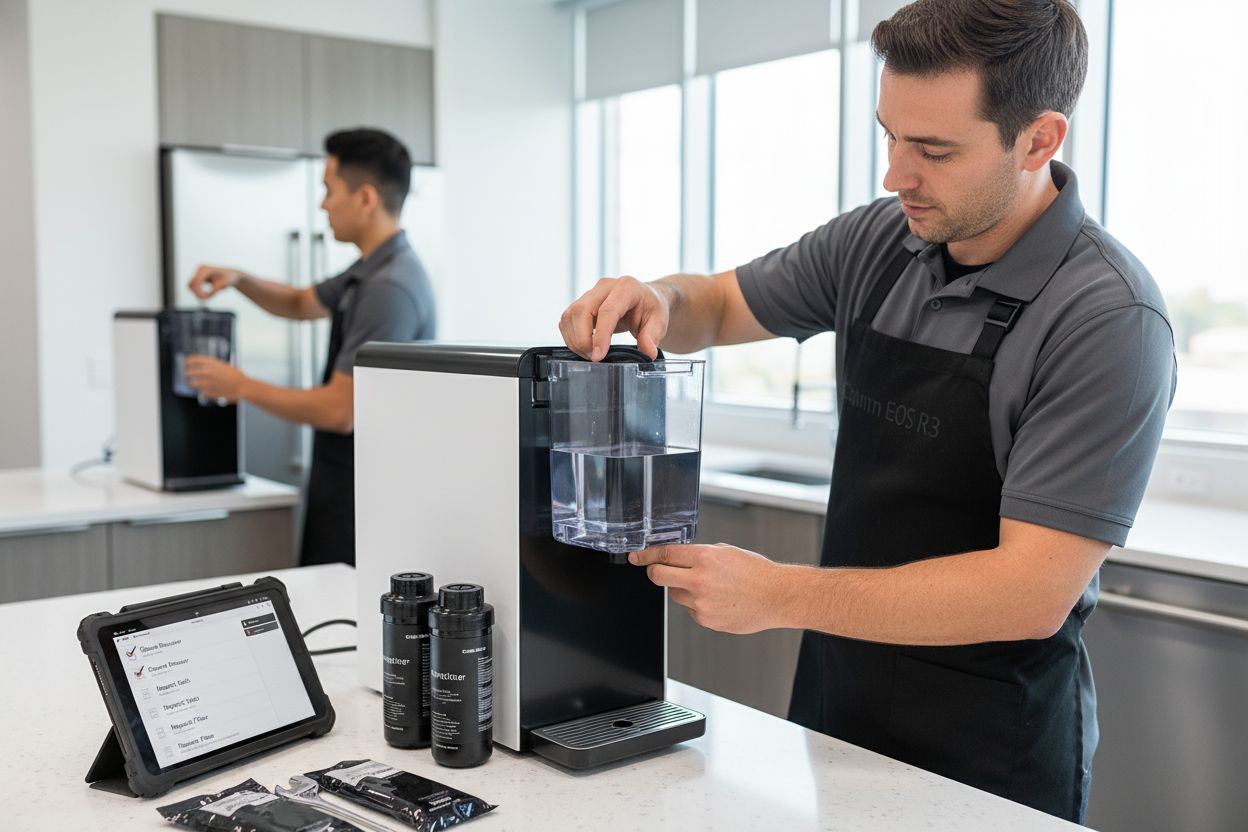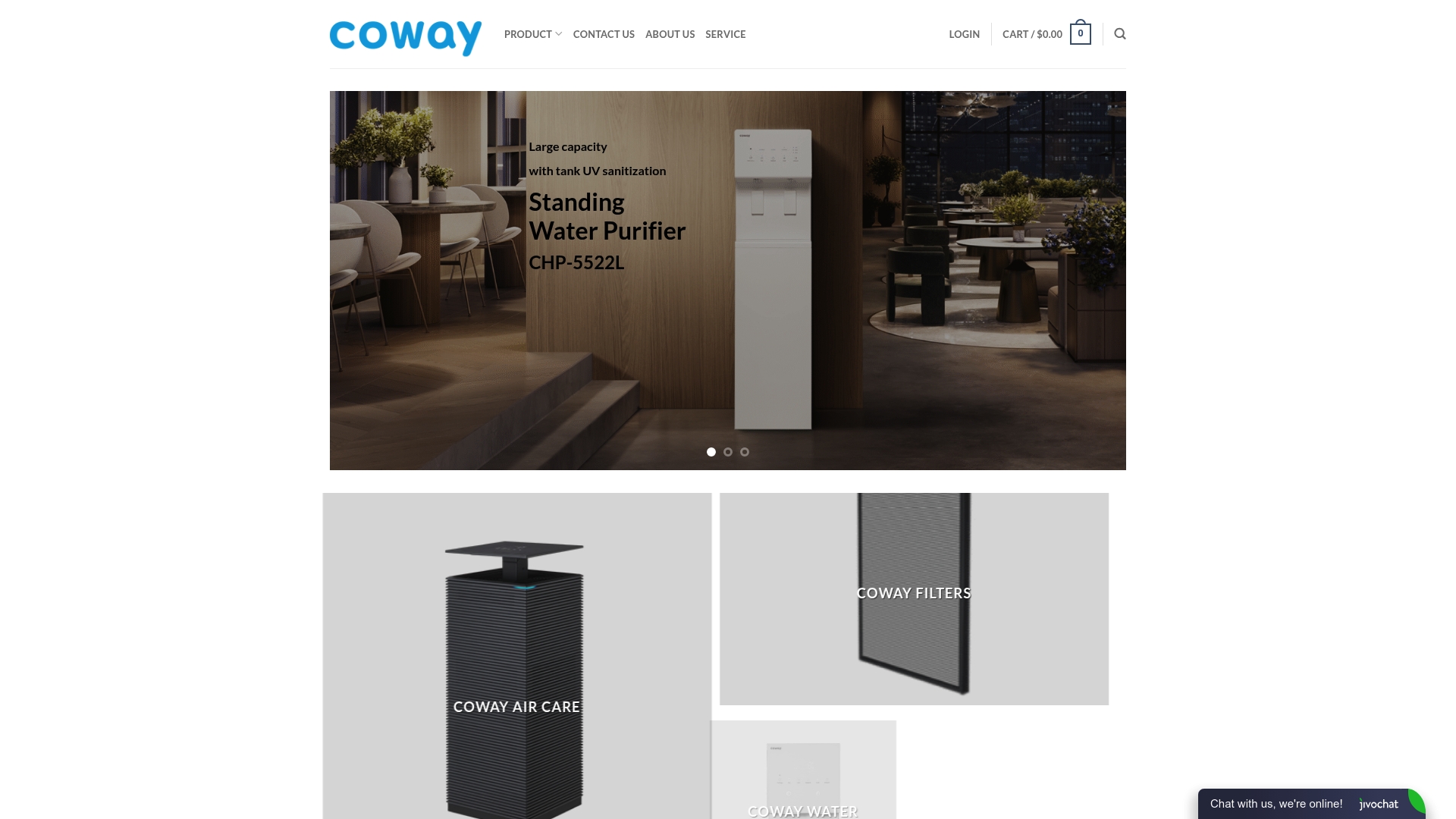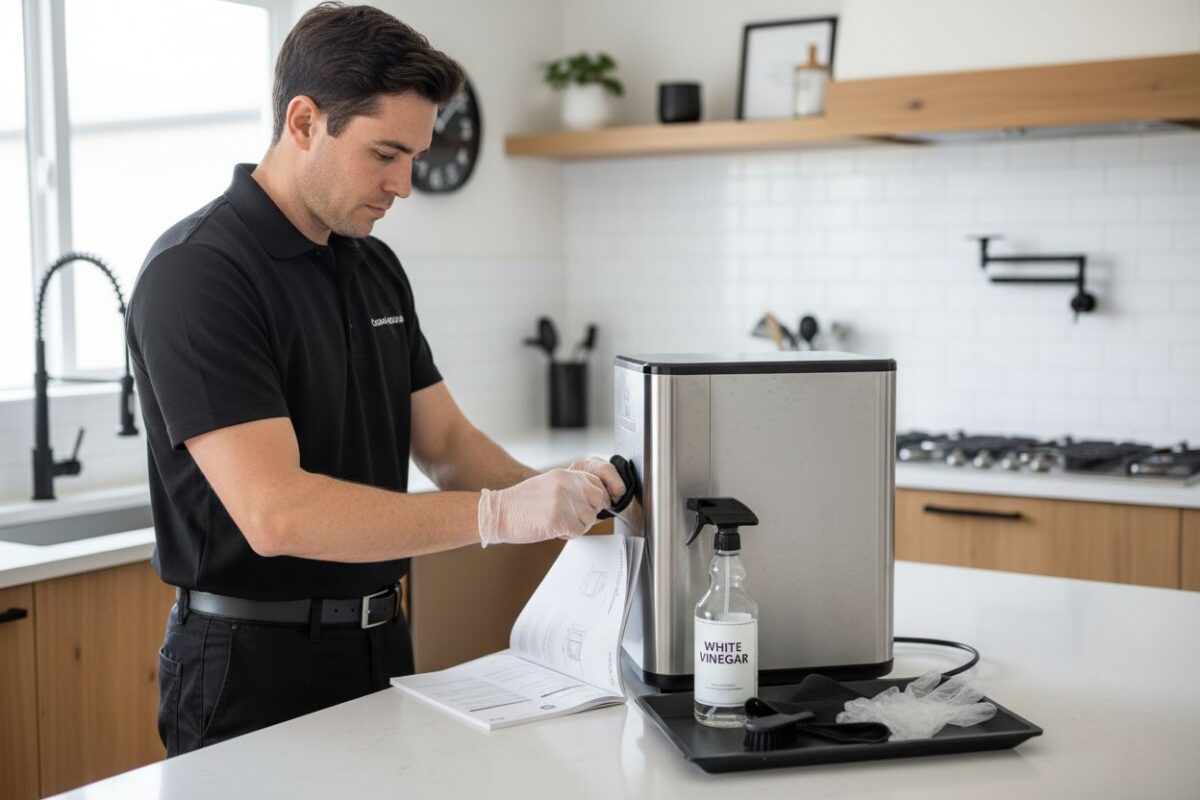Uncategorized
Cleaning Water Purifier Workflow for Spotless Results
Did you know that regular cleaning can help a water purifier last up to ten years or more? Many households overlook maintenance until problems arise, risking water quality and health. Taking simple steps to clean your purifier not only keeps your drinking water safe but can also save you money on costly repairs down the road. Find out how a few careful routines can make a big difference for your home and peace of mind.
Quick Summary
| Key Point | Explanation |
|---|---|
| 1. Gather cleaning supplies | Collect microfiber cloths, disinfectant, and gloves to ensure effective cleaning. |
| 2. Safely disconnect the purifier | Unplug and remove the water reservoir to prevent damage during maintenance. |
| 3. Clean with mild solutions | Use white vinegar to sanitize components without harmful chemicals. |
| 4. Properly reassemble parts | Ensure filters and reservoir are securely reinstalled to avoid leaks. |
| 5. Test water quality post-cleaning | Check for clarity, smell, and taste to confirm safe drinking water. |
Table of Contents
- Step 1: Gather Necessary Cleaning Supplies
- Step 2: Turn Off and Disassemble The Purifier
- Step 3: Clean and Sanitize Key Components
- Step 4: Reassemble and Restore The Purifier
- Step 5: Test Water Quality After Cleaning
Step 1: Gather Necessary Cleaning Supplies
Before diving into water purifier maintenance, you will want to collect all your cleaning materials in one organized spot. This preparation ensures a smooth and efficient cleaning process.
First, grab some soft microfiber cloths that wo not scratch your water purifier’s delicate surfaces. According to Tami Maintenance Advice, gentle cleaning materials are crucial for protecting your appliance’s exterior and internal components.
Your cleaning kit should include:
- Soft microfiber cleaning cloths
- Mild disinfectant solution or white vinegar
- Clean water for rinsing
- Replacement filters (if recommended by manufacturer)
- Soft brush with soft bristles
- Rubber gloves to protect your hands
As recommended by Aquafit Water Treatment Blog, aim to sanitize your water purifier every 3 to 6 months using mild disinfectants. White vinegar works excellently as a natural cleaning agent that cuts through mineral deposits without harsh chemicals.
Pro Tip: Always check your water purifier manual before starting. Manufacturers often have specific recommendations for cleaning and maintenance that can vary by model.
With these supplies ready, you are set to move forward confidently with your water purifier cleaning process. Proper preparation sets the stage for thorough and safe maintenance.
![]()
Step 2: Turn Off and Disassemble the Purifier
Preparing your water purifier for cleaning requires careful and methodical disconnection. This step protects both you and your appliance from potential electrical or water damage during the maintenance process.
Start by completely powering down your water purifier. Unplug the unit from its electrical outlet and ensure no power connections remain active. According to MdM Australian Practical Guide, unplugging the unit is a critical first step before any cleaning or maintenance work begins.
Next, remove the water reservoir carefully. Most water purifiers have a removable tank that can be detached for thorough cleaning. Gently lift and extract the reservoir making sure not to spill any remaining water. Read our guide on understanding the role of maintenance in purifiers for more detailed insights into proper handling.
Before proceeding with comprehensive disassembly, follow the advice from Pureit Water Maintenance Blog. They recommend limiting disassembly to components specifically intended for cleaning. This means focusing on easily removable parts like reservoirs water tanks and external filters.
Pro Tip: Always consult your specific water purifier manual. Different models might have unique disassembly instructions that vary from general guidelines.
With the purifier safely disconnected and partially disassembled you are now ready to move on to the next cleaning stage. Careful preparation ensures a safe and effective maintenance process.
Step 3: Clean and Sanitize Key Components
Your water purifier’s internal components require careful and thorough sanitization to ensure clean drinking water and maintain system performance. This step transforms routine maintenance into a precision cleaning process that protects your health and extends your appliance’s life.
Start by focusing on the water reservoir. According to MdM Australian Practical Guide, wash the reservoir using a mild detergent and warm water. Gently scrub all surfaces avoiding abrasive materials that might scratch the interior. Rinse multiple times to eliminate any soap residue that could affect water taste.
For disinfection, white vinegar becomes your best friend. Create a solution of equal parts water and white vinegar and thoroughly clean all removable parts. Let the solution sit for about 10 minutes to effectively kill potential bacteria. Our comprehensive guide on understanding the role of service in purifier lifespan provides additional insights into maintaining your system’s health.
As recommended by Pureit Water Maintenance Blog, pay special attention to replacing sediment and carbon filters every 6 to 12 months. These filters are critical in maintaining water quality and preventing contaminant buildup.
Pro Tip: Always use manufacturer approved cleaning solutions and avoid harsh chemicals that might damage your water purifier’s sensitive components.
After cleaning and sanitizing, thoroughly rinse all components with clean water to remove any cleaning solution traces. Your meticulously cleaned water purifier is now ready for reassembly and continued use.
Here’s a comparison of cleaning tasks and recommended frequency for each component:
| Component | Cleaning Task | Recommended Frequency |
|---|---|---|
| Water Reservoir | Wash & sanitize | Every 3–6 months |
| External Surfaces | Wipe with microfiber cloth | Every 1–2 weeks |
| Sediment Filter | Replace | Every 6–12 months |
| Carbon Filter | Replace | Every 6–12 months |
| Removable Parts | Soak in vinegar solution | Every 3–6 months |
| Power Cord/Connections | Inspect | Every cleaning session |
Step 4: Reassemble and Restore the Purifier
With cleaning complete, you are now ready to carefully reconstruct your water purifier and return it to full operational status. This critical step ensures all components are correctly positioned and the system functions optimally.
Begin by meticulously reinstalling each filter according to the manufacturer’s specific guidelines. According to MdM Australian Practical Guide, precise reassembly is crucial. Make certain each filter is seated correctly and securely. Check out our essential maintenance checklist for additional guidance on proper component reinstallation.
Carefully reattach the water reservoir ensuring all connections are tight and leak free. As recommended by Aquafit Maintenance Blog, take a moment to inspect all fittings and connections. A careful visual inspection can prevent potential water leakage or system malfunction.

Reconnect the power cord and plug in your water purifier. Run a complete rinse cycle to flush out any remaining cleaning solution and verify the system operates smoothly. Pay attention to water flow and taste as indicators of successful restoration.
Pro Tip: After reassembly perform a small test run and observe the water output. Clear water with no unusual taste or odor signals a successful maintenance process.
Your water purifier is now clean sanitized and ready to provide fresh high quality drinking water.
Regular maintenance like this keeps your system running efficiently and extends its overall lifespan.
Step 5: Test Water Quality After Cleaning
After meticulously cleaning your water purifier, the final and most important step is verifying the water quality. This critical evaluation ensures that your maintenance efforts have successfully restored your system to peak performance.
Start by collecting a clean water sample in a clear glass. Observe the water carefully look for any unusual color cloudiness or particles. Read our essential guide to safe drinking water for comprehensive insights into water quality indicators.
According to the EPA’s Domestic Guidance, homeowners should pay attention to several key water quality parameters. These include checking for coliform bacteria total dissolved solids and pH levels. While professional testing provides the most accurate results home test kits can offer initial insights into your water quality.
Perform a basic taste and smell test. Fresh clean water should be odorless and have a neutral taste. Any metallic chlorine or musty smell might indicate that additional cleaning or filter replacement is necessary. The EPA Water Filter Toolkit emphasizes the importance of regular monitoring to ensure water safety.
Pro Tip: Consider keeping a maintenance log to track your water purifier cleaning dates filter replacements and any quality observations. This helps establish a consistent maintenance routine.
If you notice any persistent water quality issues beyond what standard cleaning resolves consider consulting a professional water treatment specialist. Your diligence ensures safe reliable drinking water for you and your family.
Ready for Effortless Clean Water? Discover Coway Solutions Now
Tired of the hassle in your water purifier cleaning routine? As highlighted in this guide, keeping track of every filter change and disinfecting each component can be overwhelming—especially with today’s busy schedules. If your goal is spotless results and peace of mind, Coway’s advanced purifiers deliver reliable performance with less manual upkeep. With features like UV sanitization and multi-stage filtration, you get continuous fresh water and more time for what matters to you.

Stop worrying about complex maintenance. Explore our latest water purifiers designed for easy care, automatic alerts, and expert service options. Visit Coway Water Purifier today to see how our systems can simplify your life. Invest in proven purity and let our technology handle the hard work. Your family deserves consistently safe water—see the difference now and secure a healthier home environment.
Frequently Asked Questions
How often should I clean my water purifier for optimal performance?
To maintain your water purifier effectively, aim to clean it every 3 to 6 months. Regular cleaning helps prevent mineral buildup and ensures that the appliance continues to provide high-quality drinking water.
What cleaning supplies do I need to use for cleaning my water purifier?
Gather soft microfiber cloths, a mild disinfectant solution or white vinegar, and a soft brush with soft bristles. Be sure to include replacement filters, rubber gloves, and clean water for rinsing during the cleaning process.
How do I properly disassemble my water purifier for cleaning?
Start by completely powering down the unit and unplugging it. Then, carefully remove the water reservoir and limit disassembly to components specifically intended for cleaning, following your manufacturer’s instructions.
What steps should I follow to sanitize the key components of my water purifier?
Focus on washing the water reservoir with warm, soapy water, avoiding abrasive materials. Use a solution of equal parts water and white vinegar to disinfect removable parts, allowing the solution to sit for about 10 minutes before rinsing thoroughly.
How do I test the water quality after cleaning my water purifier?
Collect a clean water sample in a glass and inspect it for any unusual color or particles. Additionally, perform a taste and smell test to ensure the water is odorless and neutral, indicating that your cleaning efforts were successful.
What should I do if I notice persistent water quality issues after cleaning?
If you continue to experience water quality issues, consider replacing filters or consulting a water treatment specialist. Keeping a maintenance log will help you track cleaning dates and filter replacements, making it easier to identify patterns or recurring problems.
Recommended
- 7 Top Water Filtration Methods You Need to Know – Coway Water Purifier
- Understanding Sustainable Water Purification Methods – Coway Water Purifier
- Complete Office Water Purification Guide for Healthier Spaces – Coway Water Purifier
- 7 Effective Water Purification Methods for Your Home – Coway Water Purifier

